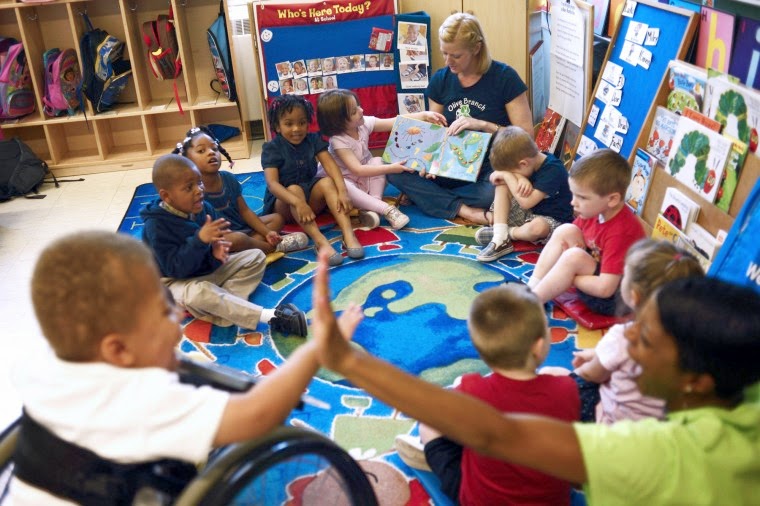
 Belongingness is the human emotional need to be an accepted member of a group. Whether it is family, friends, co-workers, a religion, or something else, people tend to have an ‘inherent’ desire to belong and be an important part of something greater than themselves. This implies a relationship that is greater than simple acquaintance or familiarity. The need to belong is the need to give and receive attention to and from others.
Belongingness is the human emotional need to be an accepted member of a group. Whether it is family, friends, co-workers, a religion, or something else, people tend to have an ‘inherent’ desire to belong and be an important part of something greater than themselves. This implies a relationship that is greater than simple acquaintance or familiarity. The need to belong is the need to give and receive attention to and from others.
That’s how Wikipedia defines the word “belongingness. We all have different wants and needs in life; like our need to be loved, we have strong desire to belong to the group, organization or community where we are rightfully placed.
But educators for inclusive classrooms tell a different story. More than their strong desire is a goal that each of his students will feel the belongingness in the class and will not single-out in any way. The inclusion of special needs students becomes a reality in general education. Hence, facing another set of challenges especially when it comes to handling disruptive behavior efficiently.
Every educator’s objective is to provide the best instruction and education for his students. So, as an educator, how do you handle disruptive behavior? You might want to consider this tried and tested techniques from the experts.
Four Techniques to Better Manage Behavior in the Classroom
- Identify the cause of student misbehavior
- Boredom due to lack of interest in learning or grade level misplacement.
- Disrespect for authority figures compounded by a disregard for teachers.
- Cliques that are run by students who influence others to disrupt the class.
- Physical, cognitive and biochemical disabilities and learning impairments.
- Embrace special needs students
Students with learning impairments frequently become frustrated and angry. This can lead to emotional outbursts and time-consuming tantrums. Among special needs students, autism spectrum disorder (ASD) is the No. 1 diagnosis. Autism spectrum disorders include Asperger’s syndrome and attention deficit hyperactivity disorder (ADHD).
- Set high expectations for inclusive classrooms
Establishing and reinforcing positive expectations for special needs students sets the bar higher for all students within inclusive classrooms.
Demonstrate classroom leadership abilities
- Know names
- Be approachable
- Project fairness
- Establish authority
- Captive audience
Cultivate classroom organizational skills
- Plan success
- Establish rules
- Keep records
- Build structure
- Make transitions
Create a positive classroom atmosphere
- Be trustworthy
- Adjust seating
- Group students
- Assign buddies
- Set goals
Resolve student behavior conflicts
- Identify problems
- Collaborate professionally
- Enforce consequences
- Take action
- Meet parents
- Set goals for inclusive classrooms
Effective teachers establish a call to action for the class every day. Like good presenters, they tell students upfront what they are going to learn. They teach them, and then they tell them what they’ve learned. This helps keep all students within inclusive classrooms task-oriented. Telling students what they’re going to learn and accomplishing it also establishes a bond between the teacher and students.
(Access full article here: Behavior Management Techniques for Teachers: Inclusive Classrooms)
5 Effective Strategies for the Inclusive Classroom
- Get to know your students’ IEPs/504s
Upon receiving notice that a student with a specific plan is entering your class, it’s important to connect with that student’s case manager. For a student with a 504 plan, that is usually the school counselor; for a student with an IEP it’s either the Special Education Teacher or Resource Specialist. You should receive a brief synopsis of the IEP, often referred to as the “IEP at a Glance” form.
- Implement Universal Design for Learning (UDL)
It’s an approach to curriculum planning and mapping that makes learning engaging and accessible to a wider range of learners with different strengths and needs.
- Support Important Life Skills
- telling time from an analog clock
- writing a simple letter
- signing their name in cursive
- note taking and study skills
- Engage in Collaborative Planning and Teaching
Opening up your room to service providers, paraprofessionals, special education teachers, and parents gives you valuable opportunities to participate in collaborative teaching. Collaborative teaching looks differently depending on what school, level, and setting you are working.
- Develop a strong Behavior Management Plan
Some specific behavior management strategies that support effective instruction are:
- Posting daily schedules
- Displaying classroom rules and expectations
- Encouraging peer to peer instruction and leadership
- Using signals to quiet down, start working, and putting away materials.
- Giving students folders, labels and containers to organize supplies.
- Checking in with students while they work
- Utilizing proactive rather than reactive interventions as needed
- Speaking to students privately about any concerns
- Employing specific, targeted positive reinforcement when a student meets a behavioral or academic goal.
(To get more information visit this site: ww2.kqed.org)
Educational Research Newsletters and Webinars released these Strategies for Inclusive Classrooms
- Practices for educators
Managing behavior in inclusive settings also represents a considerable challenge, requiring both classroom management techniques and individualized methods. Teaching students to monitor and manage their own behavior has proved effective. Self-management involves teaching students how to observe and record their behavior, focus on the quality of behavior, and reward themselves when a certain amount of good behavior has been recorded.
- How one teacher managed behavior
Instead of reacting to misbehavior in a punitive or controlling way, she used instructional techniques to teach desired behavior and created a motivating environment for students. Her set of rules for class behavior were “The Magic Five.”
- Menu of rewards
Students also participated in choosing both individual and group rewards from a menu provided by the teacher. Whole-class games were very desirable rewards. Edible rewards like candy were also popular and were used on a temporary basis to quickly improve behavior, but were gradually eliminated once student behavior began to improve.
(Read full article here: Strategies for Inclusive Classrooms)
Helpful Links for Managing Disruptive Behavior in an Inclusive Classroom
- Responding to Disruptive Students by Edutopia
- The Behavior Issues Guide: How to Respond, Prevent, De-escalate Effectively by specialeducationguide.com
- Implementing the Project Approach in an Inclusive Classroom: A Teacher’s First Attempt With Project-Based Learning (Voices) by naeyc.org
- 50 Tips and Tricks to Facilitating a More Inclusive Classroom by weareteachers.com
We are not affiliated with any organizations or bloggers mentioned in this article. But we admire their selfless act of helping educators provide the best instruction and education to the students through these free resources. Just like you, we have high hopes for the day to come that no one will be single-out nor left behind in an inclusive classroom because everyone deserves to belong to their own rightful place!



